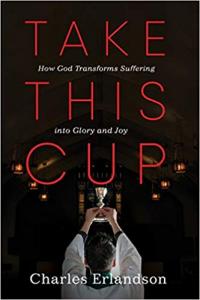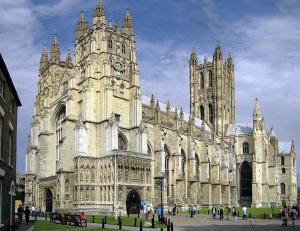 Anglicanism is Reformed
Anglicanism is Reformed
The one central thing I’ve wanted to have you see in my writings about Anglicanism is that Anglicanism is, at heart, Reformed Catholicism. In my last blog, I discussed the Catholic identity of Anglicanism and re-asserted another central idea: that “Reformed” is an adjective and “Catholic” is a noun. My examination of the Catholic identity of Anglicanism led me into a discussion of “catholicity,” which I defined as the faith once delivered to the saints. This faith is expressed most authoritatively and by unique inspiration in the Holy Scriptures. However, the apostolic faith is also embodied in the ancient Creeds, the four Ecumenical Councils, the ancient liturgies, and in the writings of the early Church Fathers. The Catholic quest of Anglicanism is to hold to that which has been believed everywhere, always and by all.
But Anglicanism also has a distinctly Reformed character as well that must be acknowledged. If Anglicanism is Reformed Catholicism, and we now understand the essentially Catholic identity of Anglicanism, then where does the Reformed aspect come in? The truth is that while the Scriptures themselves are inspired and infallible, the Church and men are not. Throughout history, the Catholic faith of the early church has been challenged from many quarters, and so catholicity must always be open to the work of the Holy Spirit in reforming a Church that is corrupt or in error.
The great Ecumenical Councils may be seen as a reform movement within the Church. At the time of the Councils (especially during the fourth and fifth centuries) many heresies regarding essential doctrines were being propagated. The Councils were summoned in order to combat (or “reform”) these errors.
The reformation movement with which most of us are most familiar is, of course, the Protestant Reformation of the 16th century. In reality, it’s not quite right to speak of “The Reformation.” More properly, a series of related reformations took place especially during the 16th century. One kind of Reformation took place under Luther’s leadership in Germany and other places, while the Reformation took on related yet distinct forms under Calvin in Geneva, Zwingli in Switzerland, and in England under the leadership of Cranmer and the English State. In the Church of England, the Reformation eventually took on a different form than the major Reformations of the Continent, even while in theological substance it often started in a similar place as the other Reformations. In typical English style, the English Reformation was a more moderate Reformation than those that took place on the Continent. One way of seeing this is to say that in some ways the English Church retained more of the catholic heritage, for example in retaining bishops and the ancient liturgy.
Because Anglicanism is a part of the larger Reformation of the 16th century, it’s appropriate to speak of Anglicanism both in terms of its being “Reformed” and also “Protestant.” However, Protestant is a large term that includes so much diversity that it also masks a great deal of disagreement.
So why did the Catholic faith require a reformation in the 16th century? The short (but accurate) answer is that the medieval Roman Catholic Church, which was by the 16th century essentially the same as Western Christianity, had become filled with a number of serious errors, abuses, and corruption. Reform movements within the Roman Catholic Church had manifested themselves for centuries, but none had adequate power or motive to cleanse the Church of these errors and abuses. Time does not permit a discussion of these errors, but I’m sure most are familiar with the abuses of papal power and claims, clerical exaltation at the expense of the laity, a liturgy in a language which the people couldn’t understand, erroneous doctrines about the nature of grace and the Sacraments, and the Holy Communion which was effectively taken out of the hands of the people.
In the Continental Reformations, ultimately, the result was not only a purging of the errors and abuses of the medieval Church but also to get rid of much that had been the unbroken belief and practice of the Church since the earliest centuries. While men like Calvin and Luther read widely in the Church Fathers and often adhered to a relatively full Catholic faith, in time most of the churches of the Reformation ultimately came to reject much that the Church had taught and done since the earliest centuries. These Continental Reformations, in turn, unleashed even more extreme Reformations, some of which are related to Anabaptism and which bear a resemblance to much of modern Protestantism in the West.
Areas where most of the “Reformed” churches ultimately parted ways not only with the medieval Roman Catholic Church but also with the early church and Anglicanism include: church government (Reformed churches eradicated the office of bishop which was universal by the end of the first century and had been maintained until the Reformation); understandings of the Sacraments (the Anabaptists, Baptists, and non-denominational churches today have gotten rid of infant baptism, which had been the unbroken practice of the early church; the Eucharist or Lord’s supper came to be viewed as merely a mnemonic device or a ordinance where the Presence of Christ was diminished); ecclesiologies (many of the churches that proceeded out of the Reformation view the church as primarily an invisible entity composed of individual members related to Christ who voluntary covenant with each other, as opposed to the early church’s view that the Church was the visible Body of Christ on earth with certain distinguishing marks); and liturgy (virtually all of the churches that proceeded from the Continental Reformation discarded virtually all aspects of the ancient liturgy. Lutheranism is an exception here, and in many other regards).
In fact, many Reformed churches simply say they are “Reformed,” turning the adjective into a noun, somewhat akin to the way that what Luther taught became Lutheranism and what Calvin taught became “Calvinism.” As others have noticed, Calvin would not have wholeheartedly embraced what has become known as Calvinism.
How can we explain the fact that the Church of England chose both to rid itself of the errors and abuses of the Roman Catholic Church while at the same time maintaining much of what had been taught and practiced in the early Church? While over time the Continental Reformation began to look more and more at the Bible – by itself – as the sole authority and source of apostolic teaching, the Church of England continued to gaze intently as well at the early Church and especially the writings of the early Church Fathers. Coming to the Bible alone with human reason, and without the Catholic traditions of the Church, Christians began to interpret the Bible in many areas in ways that were contrary to what the Church had always taught (see the list above for some examples of these areas). If you begin with the idea that you’ll believe only what can be directly proved by proof texts from Scripture, then you’ll arrive at different beliefs than if you look at the Scriptures typologically, covenantally, and within the framework of the Church’s unbroken tradition of interpretation and embodiment.
By contrast to the Continent Reformations, (without yet entering into a discussion of just why and how this happened), the Church of England chose to maintain the bishops; a strong view of the Church; a strong view of the presence of Christ in the Sacraments (while refusing to tolerate transubstantiation); infant baptism; and the ancient liturgies.
So while both the Continental Reformations and the English Reformation undertook the work of reformation, they ultimately (over time) used different principles on which to establish the work of reformation. While gladly acknowledging its Reformation and even Protestant heritage, Anglicanism has also maintained its essential Catholic identity.
In the next blog, I’ll take a break from the more intellectual approach and tell you how I became an Anglican. Please share your stories with me and others!









